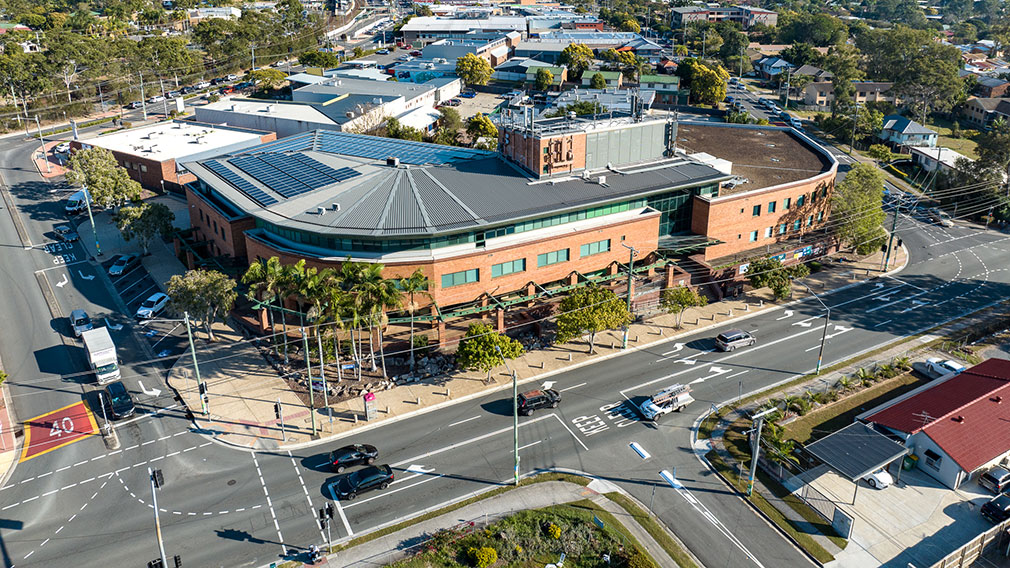‘The study nook just no longer works’: Renos run hot

Treasury estimates the “HomeBuilder” scheme will support up to $18 billion of residential construction projects. (Getty)
You probably won’t need to reach for a chair on reading this, but it turns out that COVID-19 has caused a lot of homeowners to look at their homes in a less charitable light now they’ve had to spend a lot of time in them.
According to a recent Westpac survey, the pandemic was the driving force behind one quarter of people renovating, with around 10 per cent doing so to accommodate more working from home, or WFH, and 17 per cent simply having more time during restrictions to ponder upgrades.
Clearly, all of those temporary inconveniences such as using the kitchen island as a substitute desk while WFH have suddenly become a lot more permanent, to the mutual despair of cooks and laptop users.
Architect Ben Pomroy of Melbourne and Sydney practice Rothelowman said that “being stuck inside for several weeks, it’s hard not to become acutely conscious of the positives and shortfalls of your own home”.
“All that time spent at home has greatly heightened people’s awareness of how their living space has been designed,” Mr Pomroy said. “The study nook just doesn’t work (for example).”
Earlier this month, official building approvals data highlighted Aussies’ rush to do up their homes, with the value of residential alterations and additions reaching an all-time high in November. Suggesting the reno boom has further to run, the Westpac survey of more than 2000 Australians conducted by Lonergan Research found that almost a third are planning renovations in the next five years, with outdoor areas such as a pool or deck proving highly desired.
Apartments and townhouses are also getting makeovers, Mr Pomroy noting that before COVID designers had been moving away from the likes of dedicated study spaces – a trend that that has now changed.
“There’ll be new opportunities to design compact but physically separated study/workspaces in apartments and townhouses so you can work and Zoom in private away from the rest of the family,” he said.
Ah, Zoom. It has joined death and taxes as being forever with us. And who wants to Zoom without an empty room and a closed door.
.png)
“Renovations have also caught a boost from HomeBuilder and more generally as an outlet for discretionary spending during COVID restrictions and as those working from home seek to upgrade,” said Westpac senior economist Matthew Hassan in a note last month.
Announced in June, Homebuilder has several catches to qualify, but essentially involves a $25,000 grant for people buying a new home worth under $750,000 or doing a renovation on their principal place of residence worth between $150,000 and $750,000. In late November, the government extended the scheme for three months to March 31 to continue the “steady pipeline of construction activity to keep tradies on the tools”, albeit at a reduced grant of $15,000.
The government this week revealed over 75,000 households have applied for a grant as at December 31 (80 per cent being used to build a new home), with Treasury estimating the scheme will support up to $18 billion of construction projects.
“This is a phenomenal outcome for the industry and our economy,” Assistant Treasurer and the Minister for Housing Michael Sukkar wrote in an op-ed in The Australian this week. “HomeBuilder was specifically designed … to bring forward demand and protect jobs across the sector. Results show it delivered.”
Looking ahead, the Westpac survey found that twice as many Victorians (16 per cent from that state – the worst impacted by COVID) wanted to renovate to accommodate working from home than those in New South Wales and the ACT.
Over half of the respondents in the two most populous states also said they were inspired by television programs such as The Block.
In terms of the planned reno spend, the average was about $82,000, but the range was wide: just over $93,000 for those residing in NSW and the ACT, compared to sandgropers in WA who plan to shell out a more modest just under $41,500.


